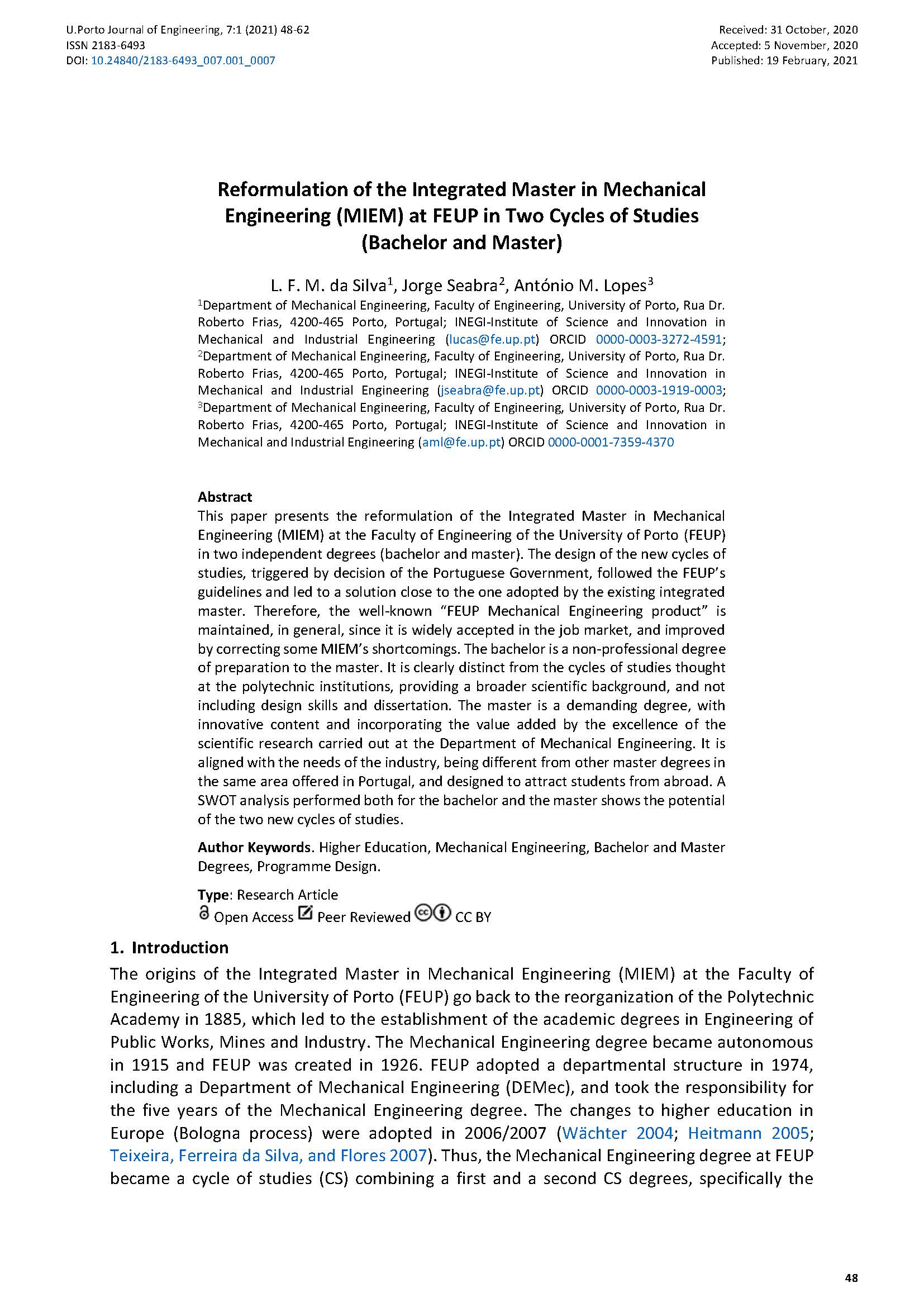Reformulation of the Integrated Master in Mechanical Engineering (MIEM) at FEUP in Two Cycles of Studies (Bachelor and Master)
Main Article Content
Abstract
This paper presents the reformulation of the Integrated Master in Mechanical Engineering (MIEM) at the Faculty of Engineering of the University of Porto (FEUP) in two independent degrees (bachelor and master). The design of the new cycles of studies, triggered by decision of the Portuguese Government, followed the FEUP’s guidelines and led to a solution close to the one adopted by the existing integrated master. Therefore, the well-known “FEUP Mechanical Engineering product” is maintained, in general, since it is widely accepted in the job market, and improved by correcting some MIEM’s shortcomings. The bachelor is a non-professional degree of preparation to the master. It is clearly distinct from the cycles of studies thought at the polytechnic institutions, providing a broader scientific background, and not including design skills and dissertation. The master is a demanding degree, with innovative content and incorporating the value added by the excellence of the scientific research carried out at the Department of Mechanical Engineering. It is aligned with the needs of the industry, being different from other master degrees in the same area offered in Portugal, and designed to attract students from abroad. A SWOT analysis performed both for the bachelor and the master shows the potential of the two new cycles of studies.
Downloads
Article Details

This work is licensed under a Creative Commons Attribution 4.0 International License.
Authors who publish with this journal agree to the following terms:
- Authors retain copyright and grant the journal right of first publication with the work simultaneously licensed under a Creative Commons Attribution License that allows others to share the work with an acknowledgement of the work's authorship and initial publication in this journal.
- Authors grant the journal the rights to provide the article in all forms and media so the article can be used on the latest technology even after publication and ensure its long-term preservation.
- Authors are able to enter into separate, additional contractual arrangements for the non-exclusive distribution of the journal's published version of the work (e.g., post it to an institutional repository or publish it in a book), with an acknowledgement of its initial publication in this journal.
- Authors are permitted and encouraged to post their work online (e.g., in institutional repositories or on their website) prior to and during the submission process, as it can lead to productive exchanges, as well as earlier and greater citation of published work (See The Effect of Open Access).

